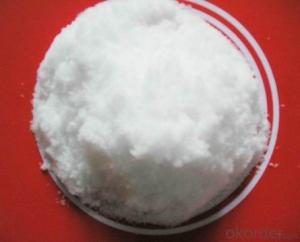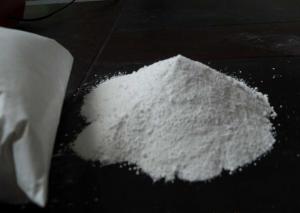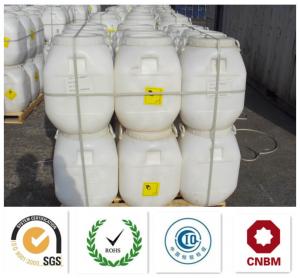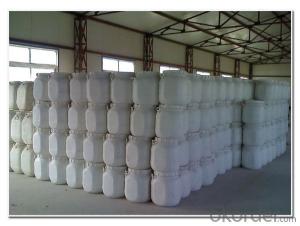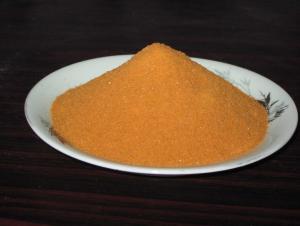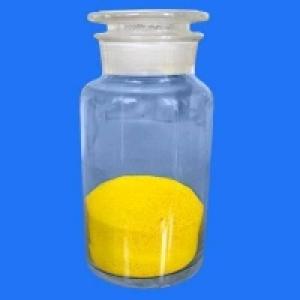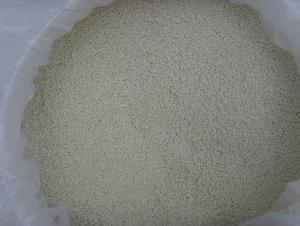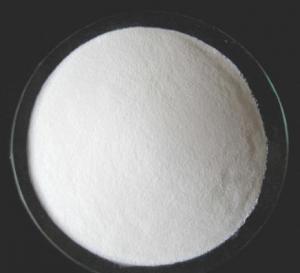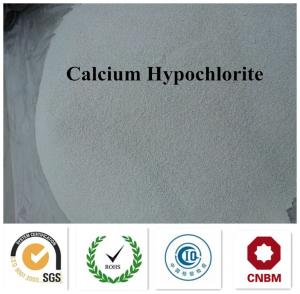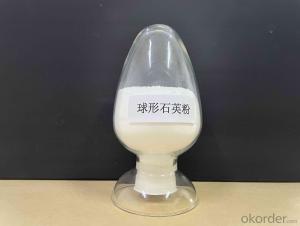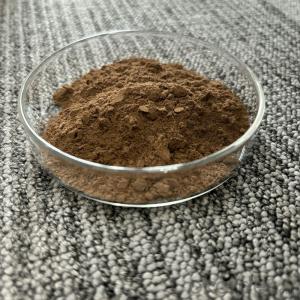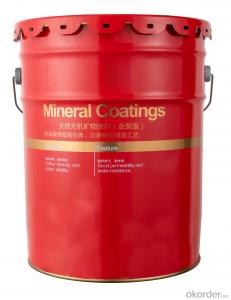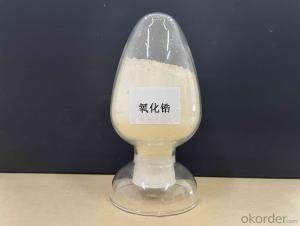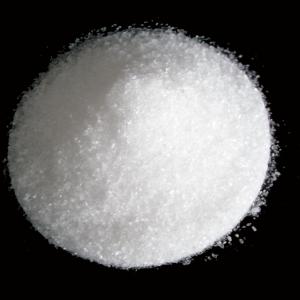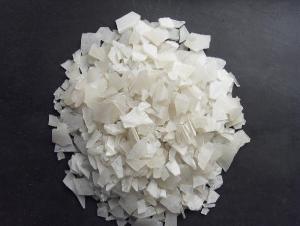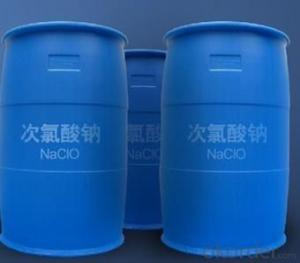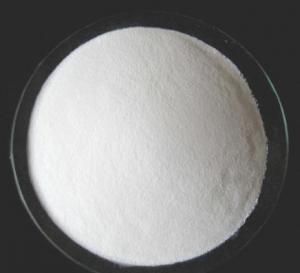Magnesium Nitrate Inorganic Salt Technical Grade
- Loading Port:
- China main port
- Payment Terms:
- TT OR LC
- Min Order Qty:
- 1000 kg
- Supply Capability:
- 500000 kg/month
OKorder Service Pledge
OKorder Financial Service
You Might Also Like
Magnesium Nitrate
Product Name: Magnesium Nitrate
Molecular formula: Mg(NO3)2 6H2O
Molecular formula: 256.40
CAS NO.:10377-60-3
HS CODE: 28342990
UN NO.: 1474 5.1 class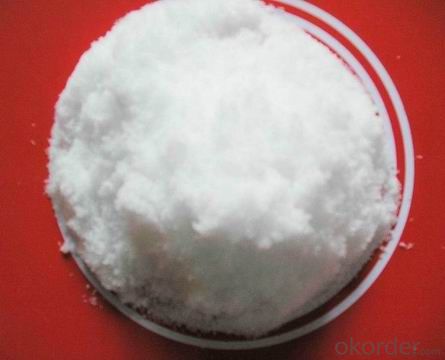
Physicochemical Properties:
Magnesium nitrate hexahydrate is colorless
crystal of monoclinic system, It is soluble in water easily, and is able to
dissolve in methanol and alcohol. It is likely to spontaneously combust
if mixed with organic chemicals.
Uses:
Concentrated nitric acid as a dehydrating agent in the industrial manufacture of explosives,
the catalyst catalysts and other magnesium salts and nitrates in raw materials.
Soluble nitrogen magnesium fertilizers for soilless cultivation of fertilizer for agriculture.
| Inspection Item | Unit | Ind. grade | Agr. grade |
| Assay | ≥ | 98.0% | 98.0% |
| Water_insolubles | ≤ | 0.05% | 0.1% |
| Iron | ≤ | 0.001% | --- |
| Heavy Metal | ≤ | 0.002% | --- |
| PH value | 5-8 | --- | |
| MgO | ≥ | --- | 15% |
| Nitrogen | ≥ | --- | 10.7% |
Packing:
In 25/50kg net PP/PE bag or the demanding of customer.
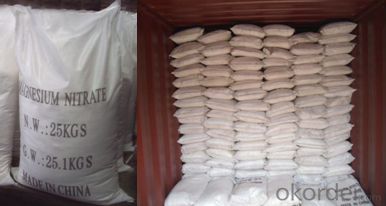
FAQ
1.Q: What is MOQ?
A: Our MOQ is 1 TON.
2.Q: Could you offer free sample?
A: We can provide free samples to you for quality testing.
3.Q: What about your packing?
A: For liquid: Flexitank, or IBC tank 1000L
For powder:Woven fabric bag with plastic film liner( 25kg or 1000kg)
Clients’ packing is workable.
4.Q: How about your productive capacity?
A: 150000 tons/Year.
5.Q: What is your delivery time?
A: Within 7 days after received deposit or L/C at sight.
- Q:What do we get from the milk?
- Milk is rich in minerals, calcium, phosphorus, iron, zinc, copper, manganese, molybdenum. The most rare is that milk is the best source of calcium in the human body, and the proportion of calcium and phosphorus is very appropriate, conducive to the absorption of calcium. Species is complex, at least 100 kinds, the main ingredients are water, fat, phospholipids, protein, lactose, inorganic salts
- Q:what is the function of salts in DNA extraction?
- The role of the salt is to neutralize the charge of the DNA's sugar phosphate backbone. This makes the DNA less hydrophilic (less soluble in water). Ethanol has a lower dielectric constant than water so it's used to promote ionic bonds between the Na+ (from the salt) and the PO3- (from the DNA backbone) causing the DNA to precipitate, to extract DNA finally..
- Q:What are the important physiological functions of inorganic salts in cells
- As a result of metabolism, every day a certain amount of inorganic salts from a variety of ways out of the body, which will be added through the diet. The metabolism of inorganic salts can be judged by analyzing the concentration of blood, hair, urine or tissue. The role of inorganic salts in the human body is interrelated. In the appropriate concentration range beneficial to the health of people and animals and plants, lack or too much can cause disease, and disease and affect its metabolism, often increase its consumption. In China, the lack of calcium, iron and iodine is more common. Selenium, fluoride and other geochemical environment with the different, both the lack of disease such as Keshan disease and Kashin-Beck disease, teeth, etc., there are too many diseases such as fluorosis and selenium poisoning.
- Q:RO reverse osmosis water machine can remove impurities in the water, that the body will not be due to lack of minerals and malnutrition?
- Modern people generally nutrient surplus, not because of the lack of minerals in the water and hurt, there is no such a report in medicine, Moreover, the world's drinking water into million, have been for decades, not because of water No minerals and malnutrition. The human body will not be due to trace minerals in the water and particularly strong, as long as the nutritional balance like the American Medical Journal (American Medical Journal) pointed out: the human body needs minerals from food, Not from drinking water.
- Q:What is the physiological function of inorganic calcium
- Maintain the life of cells and organisms
- Q:I will eat a boiled egg every morning, drink a box of milk before going to bed at night, to stop these things, eat only vegetables?
- This is not accurate, the reference, I measured is 12.3, the normal range is 9.8 to 11.8kg it! You see your normal range, estimated machine different
- Q:is table salt organic or inorganic, why?
- Inorganic - NaCl - no complex carbon compounds.
- Q:Which solvents have some solubility in inorganic salts
- A wide variety of dyes, dissolved complex. The original dyes are organic, but some salt, some metal complexes, some of the larger molecules of the fused ring compounds, some polymer heterocyclic compounds, in some common organic solvents in the solubility is better than disperse dyes Raw dyes and oil-soluble dyes (this is actually the raw material of solvent pigments, strictly speaking, not dyes). There are basically additives in the finished dyes, such as direct dyes, acid dyes, reactive dyes, cationic dyes and other water-soluble dyes will be added inorganic salts, disperse dyes, reducing dyes will be added sulfonate sodium dispersant. In addition, the dye and other chemical products, their purity requirements are generally very low, will allow the presence of certain insoluble impurities. So the organic solvent can not be completely dissolved dye products really is very common or even a normal phenomenon.
- Q:The lack of symptoms and food sources of several inorganic salts
- Food sources of inorganic salts containing calcium Source: dairy products, beans, cereals, kelp and so on. Source: seafood, etc. Food of iron-containing inorganic salts Source: Fruits Containing iodine-containing inorganic salts Source (trace): seaweed, jellyfish, corn, mussels, etc. Zinc-containing inorganic salt food sources (trace): animal liver (viscera), fruit, peanuts, etc.
1. Manufacturer Overview |
|
|---|---|
| Location | |
| Year Established | |
| Annual Output Value | |
| Main Markets | |
| Company Certifications | |
2. Manufacturer Certificates |
|
|---|---|
| a) Certification Name | |
| Range | |
| Reference | |
| Validity Period | |
3. Manufacturer Capability |
|
|---|---|
| a)Trade Capacity | |
| Nearest Port | |
| Export Percentage | |
| No.of Employees in Trade Department | |
| Language Spoken: | |
| b)Factory Information | |
| Factory Size: | |
| No. of Production Lines | |
| Contract Manufacturing | |
| Product Price Range | |
Send your message to us
Magnesium Nitrate Inorganic Salt Technical Grade
- Loading Port:
- China main port
- Payment Terms:
- TT OR LC
- Min Order Qty:
- 1000 kg
- Supply Capability:
- 500000 kg/month
OKorder Service Pledge
OKorder Financial Service
Similar products
New products
Hot products
Hot Searches
Related keywords
